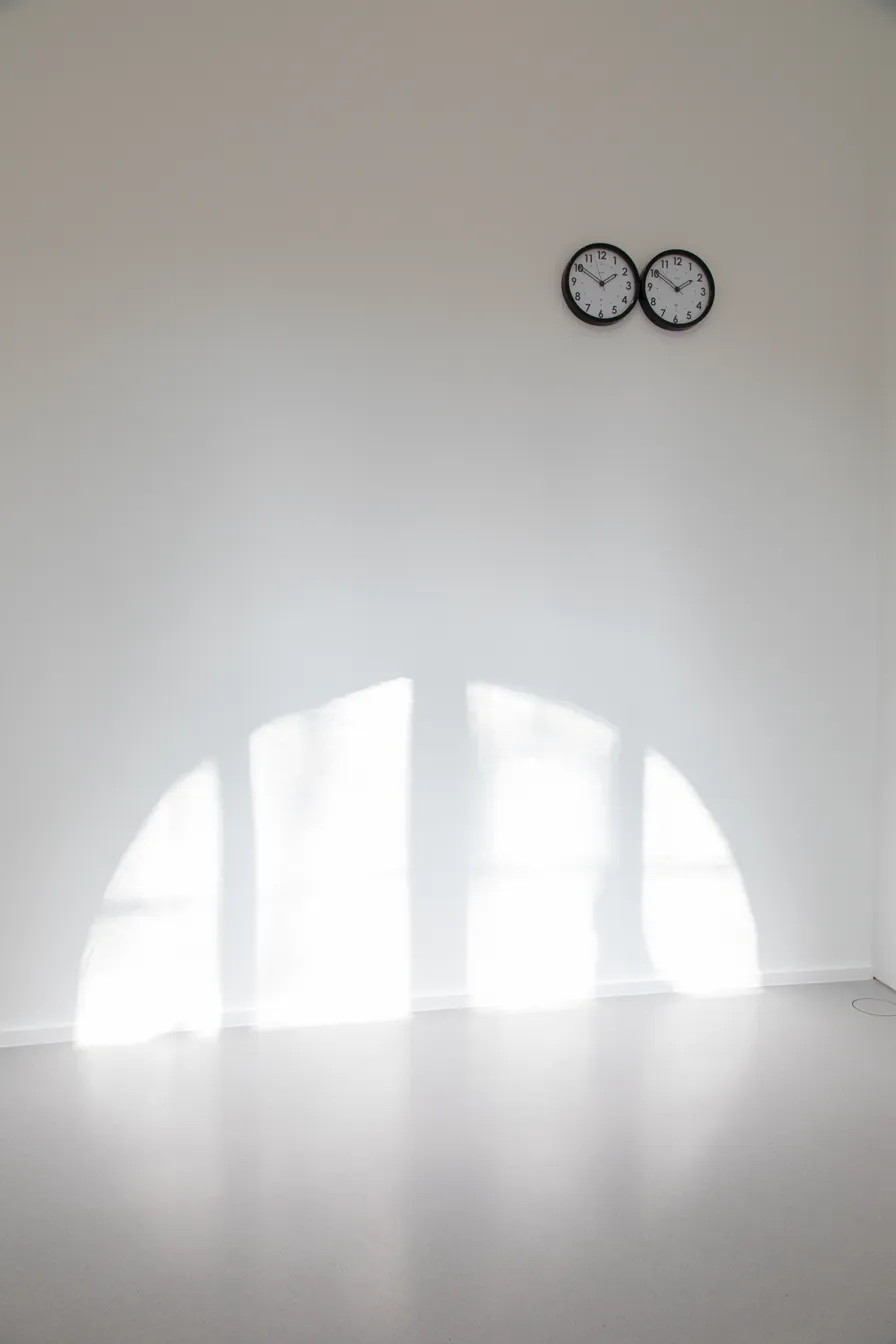
Sensitive Time
We have done everything to hide it from ourselves. We have done every-thing to get rid of it. Yet there is nothing purely mathematical about time. It is not the result of the interplay of abstract and immaterial quantities. There is no need to use numbers. There is no need to use clocks.
We have done everything to hide it from ourselves. We have done every-thing to get rid of it. Yet there is nothing purely mathematical about time. It is not the result of the interplay of abstract and immaterial quantities. There is no need to use numbers. There is no need to use clocks. Of course, both the former and the latter help us to orient ourselves in this infinite mass of life that never ceases to engulf itself and, conversely, to emerge from within and free itself from all form. But in its very essence, time is not abstract. It is pure, sensitive matter. Or rather, it is the threshold which shows that all matter is an immense expanse of present, past, and future sensations. Days and seconds, months and years are not only forms of perception. They are not only the rhythm of time. Hours and days are the rain and wind. Or a special light that hits things and colors them like never before. Or the smell of grass coming from the ground, a melody we cannot recognize. There is not a moment without flavor. There is not a second without emotion. There is not an hour without desire.
But the reverse is also true. Sensations, emotions, desires do not occur outside of time and are not just its external and superficial decoration. They build time, they secrete it, second by second. This is the only reason why memory exists: time always conveys much more than the sequential order of events. This is the only reason why there is no time that is not life, a flow of sensory existence that runs through the most heteroge-neous objects and people. This is the only reason why there is no relation to time that is not aesthetic. We can only think about time through art. We can only live in time in a sensitive way. We are not the ones who give time its aesthetic character: on the contrary, it is always time that gives us the sensation, and it is only in the sensation that time is given. We are those who depend on time to feel, and therefore to live. [...]
This is why, in an apparent paradox, it is in a museum that the season—and time—can be observed in its most radical and intense form. The museum, after all, is but a place where time is deposited in a sensitive form; history in museums is always a history of the senses. It is not numbers that bear witness to the past, but forms, materials, colors. And it is in museums that it becomes clear that it is only because of time’s sensitive nature that it always lives beyond the moment in which it occurs. It is as if, in sensation, time does not merely occur, but extends and acquires a form of eternity. Each sensation in a work of art gives time a second of eternity.
The museum is, par excellence, the place where time exists and manifests itself as a season. It is a kind of astronomical observatory that no longer distinguishes between artefacts and living beings, between culture and nature, between sensations and matter. Everything within its walls becomes a season, everything aims to make time sensitive.
For both historical and architectural reasons, it would be difficult to find an exhibition space in which this identity manifests itself more radically than the Bourse de Commerce. Built on the former site of the Halle aux blés, it houses and conceals an ancient sundial. Its most recent transformation seems to suggest that if the essence of time is sen-sation, it is art that must be asked to divine the season, and it is above all in the artefacts that surround us, as well as in the nature of things, that we must recognize the shape and rhythm of the seasons. But there is more. The structure of the Bourse de Commerce does indeed seem to be reminiscent of the buildings of antiquity and the Renaissance, which had explicit climatic functions. Above all, it is the circular plan that seems to want to represent and include the cycle of time and the reality of the seasons in the form of what John Tresch has called a “cosmogram”1: an object that is simply a limited portion of the cosmos but that also tries, in its structure, to summarize and represent the totality to which it belongs.
It is in this space that art finds its new task. Art embodies, literally, the prac-tice of giving voice to time. The museum thus becomes the place where the seasons speak and, in speaking, they become inseparable from each of the human faces that inhabit them.
1 John Tresch, " Technological World-Pictures: Cosmic Things and Cosmograms", Isis, 98, no 1 (2007), p. 84-99.